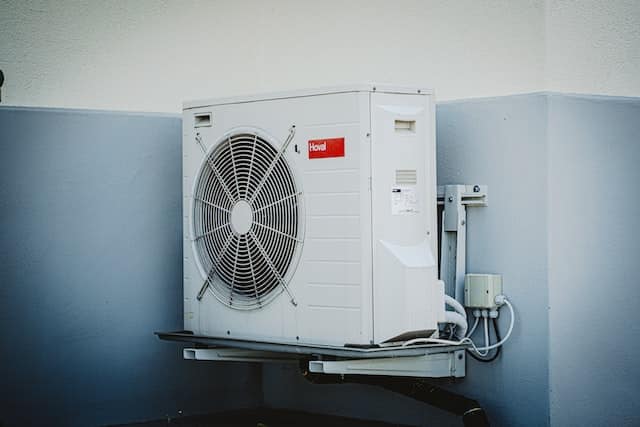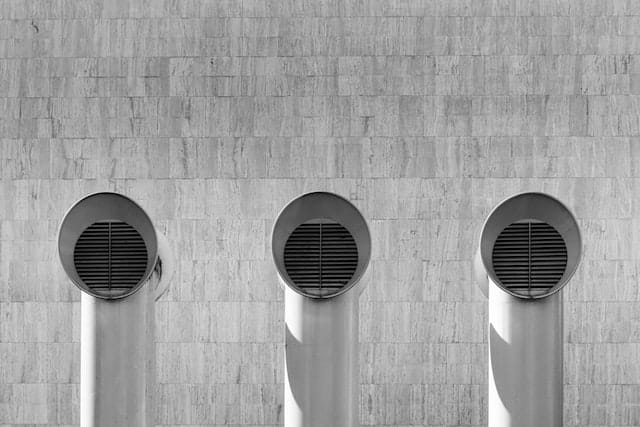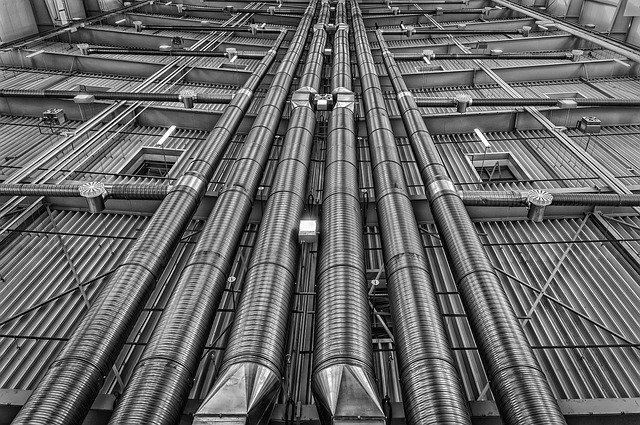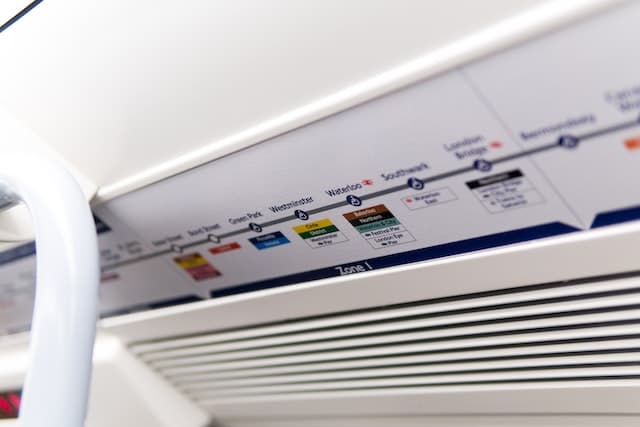Cleaning your dryer vent is an important home maintenance task. Without this essential cleaning, you risk putting your home at risk of fire. The process includes cleaning the exterior vent, hose, and lint trap.
Cleaning your dryer vent can reduce lint buildup and increase its efficiency. Not only does it prevent fires inside the house, but it also protects your dryer from damage. A poorly cleaned dryer will use two to three times more energy than a clean one.

Our services may include a one-time cleaning or a regular checkup. Regular cleaning of your dryer vent is essential to keep it running correctly. Lint, debris and other particles collect in the vent to prevent the proper drying of clothes. While most dryers contain a removable lint trap, this trap is ineffective enough to capture all lint. As a result, lint accumulates in the ductwork and sometimes makes its way to the outside vent opening.
Cleaning your dryer vent is relatively easy and can save you much money on your energy bill. The tools you need to clean your dryer include a vacuum with a long hose attachment, a dryer vent brush kit, screwdrivers, and UL-listed metal foil duct tape. Unplug your dryer vent from the wall and remove the outer vent cover to clean it. You may need to use a screwdriver or other tool to remove the duct.
An excessive amount of lint from the outdoor vent is one of the most common signs that your dryer vent is dirty. It is essential to have the outdoor vent clean as this is a vent designed to expel hot, humid air. You may also notice that clothes are drier than usual or are still damp after a normal cycle. Additionally, your dryer may be filling up your lint filter too quickly. Finally, you might notice a musty smell coming from recently dried clothes.
If you have a gas or electric dryer, you’ll want to know where your dryer vent is located. It will most likely be found in the basement, away from the house’s exterior appliances. This is because the flue can cause damage to these appliances and create a mould problem. It can also be a fire hazard. If you don’t know where to find it, refer to the installation manual.
A good rule of thumb is that your vent should be at least 90 degrees from the dryer’s side. This will ensure better airflow. Also, ensure that you do not use soft foil-style vents, a known fire risk. Instead, you can install an aluminium 90-degree elbow, which is durable and adjustable.
You can also install a dryer vent outside. If possible, choose a wall that is horizontally perpendicular to the house. This will allow the dryer to exhaust heat and humidity outside while keeping the laundry area less humid. If you can’t find a wall directly adjacent to the dryer, vent it through the roof or the basement.
If you have a dryer vent on the roof, you may want to consider installing a booster fan to improve airflow. This will help keep the lint from clogging the ducts. However, you should ensure the booster fan is specifically designed for your dryer vent. Conventional exhaust fans can be ruined by the lint and moisture produced by your dryer. If you don’t want to install a booster fan, you can opt to install a hood for your dryer.
When cleaning your dryer’s exhaust system, you can use a plastic garbage bag to collect the debris that accumulates in the duct. To clean the exterior vent, remove the cover to access the chimney. In addition, you can use a handheld vacuum to remove lint from the vent hole.
To prevent fires from igniting your dryer vent, you should regularly clean it. Regular maintenance will help you avoid significant problems in the future. One of the most critical tasks is cleaning the lint trap. It can save you much trouble if you clean the filter regularly. Another step is to vacuum the area around your dryer regularly.
If you don’t have a hood, you can install a vent that allows the exhaust to escape outside the house. But be sure to choose a location that will be safe and let the dryer exhaust properly. Avoid placing the dryer on a ladder or crawlspace when venting into the roof.
A pipe used for your dryer’s vent should be at least four feet long. If your dryer vent is in an unconditioned area, it’s best to get it insulated to prevent water and mould damage. You can also use attic insulation to cover the pipe.
If you have noticed that your clothes are always hot, it might be time to check your dryer vent. Clogged vent systems waste energy and can cause the blower and heating element to wear out faster. Another sign of clogged vent systems is a burning smell. You should immediately contact a dryer repair company if you experience any of these signs. This way, you can avoid any costly repair bills in the future.
If you have noticed lint behind the dryer vent hood or the outside flap, it is a sign that your dryer vent may be clogged. It’s best to have it cleaned once a year, though if you do many loads of laundry, you should clean your dryer vent more often.
If you notice lint behind the dryer vent hood, you should clean it immediately. To do this, you can vacuum the inside of the dryer to remove the lint. You can also remove the vent clamp attached to the dryer’s back wall. Next, reach into the opening in the back of the dryer and vacuum the lint. If necessary, use a vacuum hose to remove more debris.
If you notice increased energy bills or a slower-than-usual drying process, it’s time to clean your dryer vent. Clogged vents can cause the dryer to overheat and create more energy waste. It may even lead to the formation of mold. The resulting damages can be costly, so cleaning your dryer vent is smart.
Clogged dryer vents also cause the machine to run inefficiently. The accumulated lint will prevent the vent from circulating air, causing your clothes to dry slower. This will increase your energy bills because the machine will have to run harder to eliminate the moisture.

The clogged dryer vent may also give your dryer a burning smell. If your dryer is hot to the touch, it has a clogged vent. You should be able to see a small amount of lint coming out of the outside vent, but if it is large, there is a significant buildup. This is a serious issue that won’t go away on its own.
The lint accumulating in your dryer vent is a severe fire hazard. Cleaning your dryer vent regularly will protect you against this risk.
Regular cleaning of your dryer’s lint trap and exhaust pipe can prevent these preventable fires.
If your clothes take much longer to dry than usual, the problem may be with the vent. When lint builds up in the dryer vent, the clothes are not drying as quickly as they should. You may also notice that the clothes in your dryer seem warmer than usual.
Clogged dryer vents can also lead to overheating, and your dryer will need to work harder to dry your clothes. This means your dryer will have to run for longer and wear out faster. You can extend your dryer’s life by having your dryer vent cleaned regularly.

A clogged dryer vent can waste energy and cause hot clothes to come out of the dryer. It also increases the wear on the heating element and blower. Clogged vents can also produce a bad smell. A professional vent cleaner can inspect the flue for any blockages and make the necessary adjustments to ensure the dryer is functioning correctly.
If the vent is blocked, clothes will take longer to dry, and they may need a second cycle to dry completely. This is because the vent is designed to push heat and moisture out of the dryer. If it’s clogged, the dryer will have to work harder to dry clothes, increasing the fire risk.
If you notice excessive lint accumulation around the vent, you may have a clogged vent. Lint accumulates in the vent and the hose, which makes it difficult for air to circulate. You should also check the outside flap and the hose for any clogs.
You may need to purchase a new vent if the vent is clogged. A clogged dryer vent is a potential fire hazard, which can cause your home to burn down. Homeowners’ insurance will help cover the costs of repairing or replacing your dryer. Additionally, it will protect your belongings against damage or loss due to fire.
If the vent is clogged, you can clean it by removing any debris that may have accumulated. You should also check the hose to ensure it is not blocked. The hose is attached to the vent through brackets. The hose should be attached securely, and the dryer should be placed appropriately before plugging in.
A clogged dryer vent can cause serious problems, including increased utility bills. The worst-case scenario is when the dryer breaks down, and you have to pay a high repair bill. Fortunately, it’s not complicated to clean the vent. However, it is critical to act quickly if you notice a problem with your dryer.
Before you begin cleaning your dryer’s air vent, you need to identify the location of the vent. It is most likely located on the roof or the outside wall of your home. To get to this vent, open the flap on the outer wall, and then lift the flap to access the interior vent. Make sure to wear gloves and remove any clogs that may be present.
First, remove any lint t, that may have built up on the duct to clean the vent. You can use a brush or wire hanger to remove the lint and clean the flue. You can also use a flashlight to inspect the duct and ensure it has been cleaned properly.
When cleaning the vent, it’s a good idea to wear a mask to protect yourself from breathing in airborne debris. You should also check for leaks in the ventilation system. Also, make sure that the hose is attached correctly to the vent. If it’s not, carbon monoxide can build up.
You can use a leaf blower to clean your dryer’s air vent. To do this, you need to switch on the blower several times and hold it for 30 seconds at a time. Next, use the blower to blow debris, lint, and dirt out of the vent. To get the best results, ensure the leaf blower is not operating at its highest settings.
You can buy accessories for leaf blowers that are made for different household chores. You can use gas leaf blowers, but make sure not to use the highest setting. Alternatively, you can use a backpack leaf blower, but make sure it is fully functional before using it.
Using a cleaning kit for dryer air vent is a quick and easy way to eliminate lint buildup and reduce the risk of a house fire. A good cleaning kit will include all the parts needed to clean the vent. It should also come with a detailed cleaning guide.
The cleaning kit typically includes extension pieces and lightweight tools to clean the ducts. A cleaning kit should consist of garbage bags for the lint that collects during the cleaning process. It is recommended to clean a dryer vent every six months for a family of two to four people, though larger households may need to do it more often.
One of the most common cleaning kits is a brush attached to a drill or a long, flexible rod. The meeting can be used manually or attached to a power drill to get inside a vent. These kits are simple to use and are made of durable materials. Some cleaning kits have rods that extend up to 12 feet. Another option is a kit from Deflecto that can be extended up to 30 feet. It has a drill bit, a 4-inch brush head, and 18 19.2-inch flexible rods with screw connectors.
Using a long-handled brush for dryer vent cleaning is a great way to remove built-up lint from the vent. The meeting, typically about 10 feet long, latches onto the lint and drags it out. A lint-free vent is a more sanitary environment.
The Deflecto dryer vent cleaning kit features a flexible handle and can even be attached to a vacuum for thorough cleaning.
Before beginning the cleaning process, test the vent from the outside. Run a small load of laundry and place your hand outside the duct to test its integrity. If you notice any buildup, you may need to clean the vent more frequently.
Winnetka, Northridge, Tarzana, Canoga Park, Encino, North Hills, Woodland Hills, Van Nuys, Panorama City, Granada Hills, Mission Hills, Chatsworth, Sherman Oaks, Topanga, Pacoima, San Fernando, Valley Village, Pacific Palisades, West Hills



